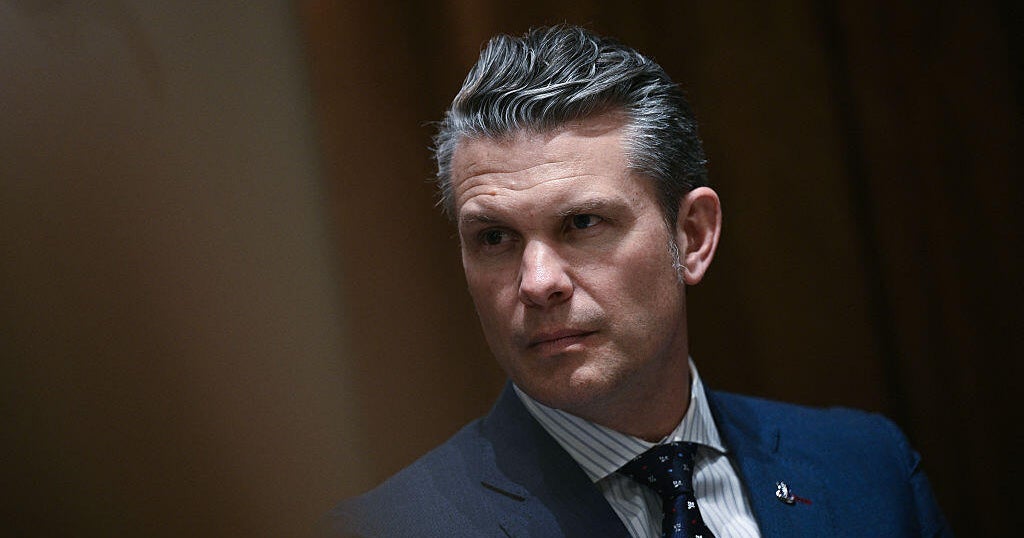The Pentagon set up a system in Defense Secretary Pete Hegseth’s office that enabled him to check messages on the encrypted messaging app Signal while at the office, sources familiar with the matter told CBS News. Two of the sources said the system bypasses standard Defense Department security protocols.
A computer monitor in Hegseth’s office was installed to give him remote access to the Signal app and text messages from his personal cellphone, the sources said. Hegseth has used the system to check and respond to those messages at his desk, multiple sources said.
The Associated Press earlier reported that Hegseth has made use of an unsecured internet connection, which is known as a “dirty line” among IT and cybersecurity professionals. The connection bypasses security protocols that defend against vulnerabilities that could be exploited by adversaries.
A Defense Department spokesperson denied there’s a “dirty line,” and denied there is currently any use of Signal inside Hegseth’s office. The spokesperson said there’s a physical line running between the computer monitor in the defense secretary’s office and his cellphone, which is kept immediately outside his office. The monitor alerts him to messages so that he can step out to check his phone. The official said it’s currently set up as a one-way line.
The office suite is a sensitive compartmentalized information facility, or SCIF, where cellphones are prohibited.
Two sources with knowledge of the matter told CBS News that the work-around is a security risk – it gives Hegseth access to his personal iPhone text messages and Signal chat groups at his desk even though his cellphone isn’t physically in the office. It is not on the Defense Department’s Non-Secure Internet Protocol Router Network, known in military parlance as NIPR, they said.
Hegseth, an Army veteran and former Fox News host, has faced criticism this week after it was reported that he shared details about impending U.S. airstrikes in Yemen in a private Signal group that he created, which included his wife as well as his brother and personal attorney, who both have positions at the Pentagon but are not in positions that have a clear need to know that sensitive information. It was the second Signal group chat where Hegseth shared the information.
An aide in Hegseth’s office, Marine Col. Ricky Buria, helped organize the effort to fix some internet connectivity issues in Hegseth’s office in the first days of the administration, two of the sources said. Buria had some oversight over the work to set up the Signal work-around, the sources said.
The Defense Department didn’t respond to a request for comment on Buria’s role.
Signal, an end-to-end encrypted messaging application, has a desktop app that connects to a user’s mobile device through a unique QR code. Once paired, the desktop version mirrors the mobile phone version, allowing users to send and receive messages, access contacts and manage shared media.
The sources spoke to CBS News under the condition of anonymity because they were not authorized to speak to the press.
James LaPorta
contributed to this report.


